Quick Reference
1933
Leyden Village, Mass.
Down the hill from town hall
Oil on Canvas
Landscape
Houses, People & Livestock
25" x 30"
Williams College, 1933
Amherst Coll. Jones Library, 1934
Syracuse (NY) MFA, 1934
Macbeth Galleries (NYC), 1934
-1935, '37, and '38
Deerfield Academy, 1935
Oqunquit Art Center (Maine), 1935
Mt. Holyoke Coll. Dwight Hall, 1935
Grand Central Galleries (NYC),
-1936, '37, and '44
Unknown
NA
Related Links
Featured Artwork: The Genial Old House
RSW's Diary Comments
"Painted about 1930. The front facade and ell of a rare old house in Leyden village. House the main subject, weather beaten old white paint, with faded battered old green blinds, very fascinating to me. I have always considered this one of my finest expressions, perfectly painted, really "big" picture, but it has never been very popular with the public. Farmer's wife in black with black cat in front yard."
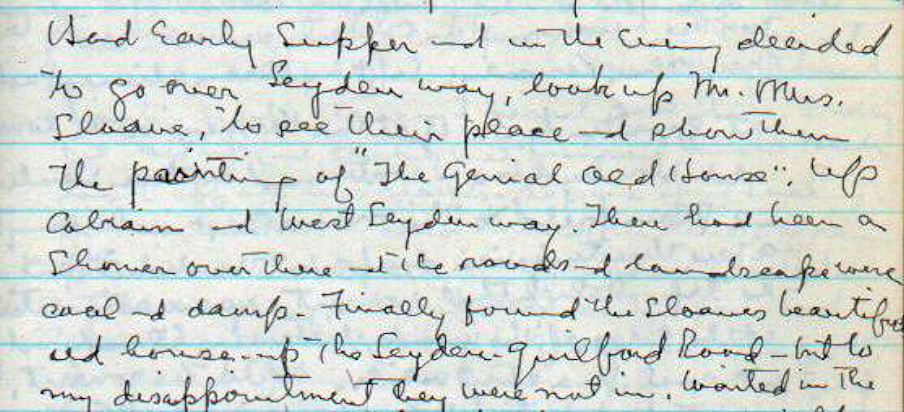
Excerpt from an RSW painting diary:
Comments on the back of a sepia print:
"One of my most loved canvases. House faded white, much weathered, soaking in the sun, faded green blinds. Delicate and lovely in color. Outstanding canvas."
Transcription of diary excerpt:
"Had early supper and in the evening decided to go over Leyden way, look up Mr. --d Mrs. Sloane, to see their place --d show them the painting of "The Genial Old House", up Colrain --d West Leyden way. There had been a shower over there and the roads and landscape were cool and damp. Finally found the Sloanes beautiful house up this Leyden Guilford Road - but to my disappointment they were not in. Waited in the car..."
Additional Notes
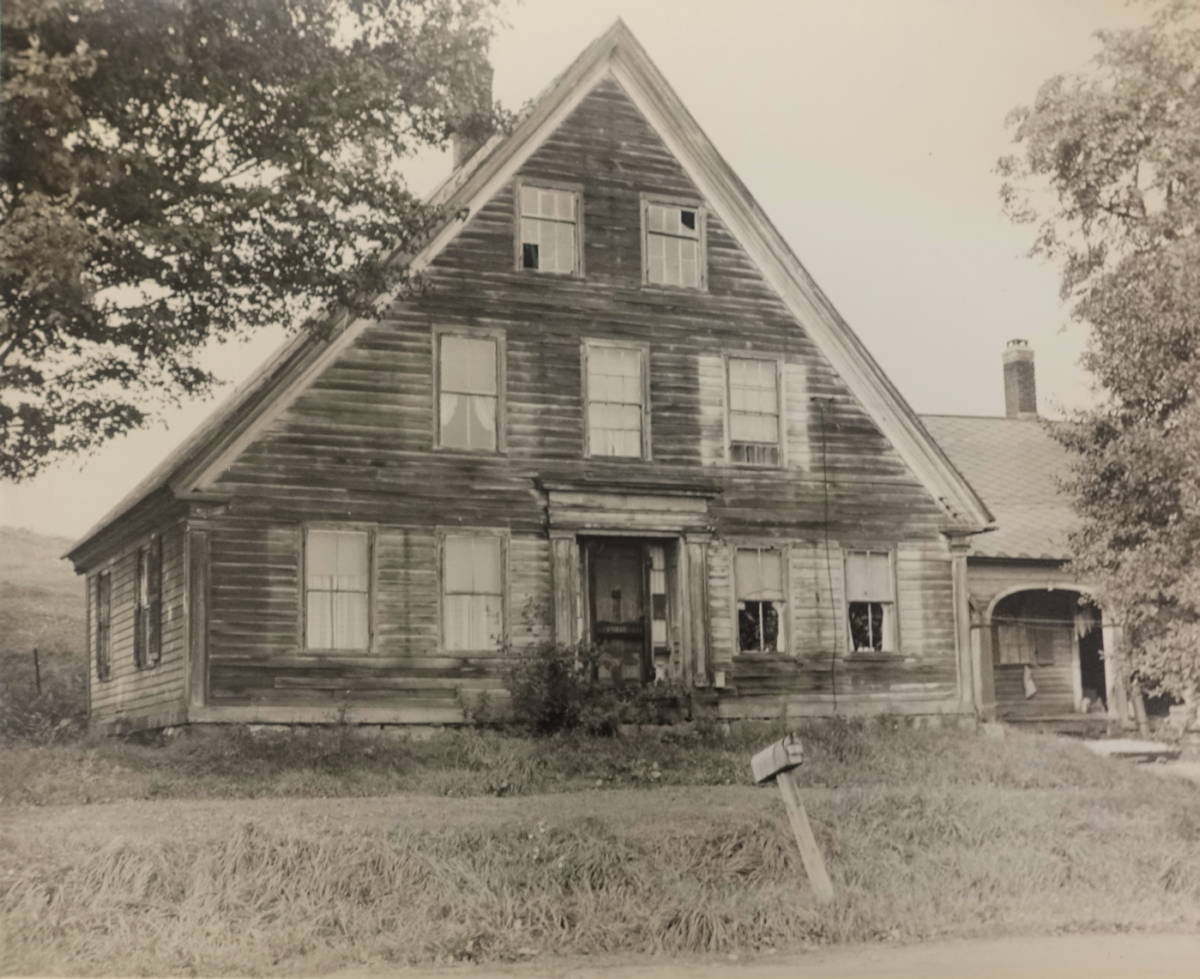
 An old photograph of the Genial Old House from
An old photograph of the Genial Old House from
what we believe was a number of years after
and perhaps a casualty of the depression.
 To the left: is an old 8 x 10" photograph of the house appearing in this artwork.
We believe it was taken a number of years later. Note that the white paint is barely visible; all of the shutters have been removed; the bush by the front stoop
is cut down; and there is a missing windowpane, as well as, a broken pane in the top row of windows. The painting was made in 1929 and this could be
anytime after that, perhaps a decade later. It is possible that the house was going to get a makeover and Woodward went to Leyden to photograph the house
before it happened.
To the left: is an old 8 x 10" photograph of the house appearing in this artwork.
We believe it was taken a number of years later. Note that the white paint is barely visible; all of the shutters have been removed; the bush by the front stoop
is cut down; and there is a missing windowpane, as well as, a broken pane in the top row of windows. The painting was made in 1929 and this could be
anytime after that, perhaps a decade later. It is possible that the house was going to get a makeover and Woodward went to Leyden to photograph the house
before it happened.
 We believe this painting is the second in a series of "editorial paintings" Woodward made during the height
of the depression. It was followed by paintings like Contentment,
Portrait of a Shadow, New England Heritage, and
Passing New England among others.
We believe this painting is the second in a series of "editorial paintings" Woodward made during the height
of the depression. It was followed by paintings like Contentment,
Portrait of a Shadow, New England Heritage, and
Passing New England among others.
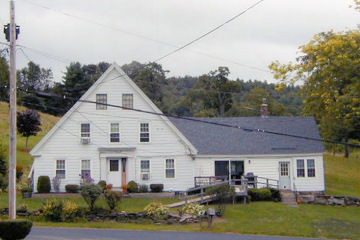
 The Genial Old House as it looks today
The Genial Old House as it looks today
The chalk version of this painting first exhibited in December 1929 at the Pynchon Gallery in Springfield, MA, a little more than a month after
Black Tuesday (October 29, 1929) that set off the stock market crash that led to the depression. Woodward notes in his diary comment that, "it has never been
very popular with the public," and perhaps the reason was the climate of the initial shock of the tragedy.
Pre-dating this painting was
Country Piazza (May of 1929) which grew in popularity over time making a stir at the 1933 Chicago World Fair. The financial collapse came to
a head in October but the trouble started in March of 1929 when the Federal Reserve issued a warning of excessive speculation spurring the first round of the
crisis with investors selling large shares in the market. Woodward's perspective was often very clear in his message of "going on" in a calm and persevering manner.
In the article below from the Pynchon exhibit, its reviewer, Jeanette Matthews, points out his persistent appreciation for the "homeliness" which recurs in his work.
This is the essence of all of his editorial paintings, the refuge of home as a shelter.
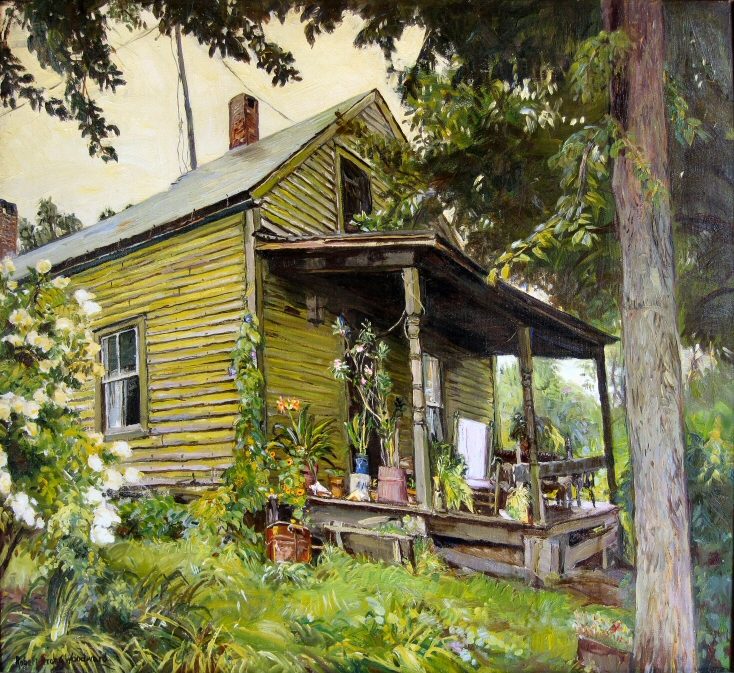
 Mrs. Keach's Front Porch, 1933
Mrs. Keach's Front Porch, 1933
From the back of this painting's sepia print: "In the
studio for sale. House, lemon yellow, together with The
Genial Old House one of my outstanding canvases."
Editor's Note:
We have made mention of this on other pages but in this case it may be accurate. Woodward seems genuinely disappointed this painting
did not receive more attention or praise or at the very least, was better liked by the public. He kept it for his own personal collection perhaps because it was truly
what he considered his "finest expression" in paint.
Of the 11 or so paintings Woodward says are his favorite this or that or "best" or "finest expressions"
as he does with The Genial Old House... 9 remanded in his personal collection not because he couldn't sell them but rather-- the right home never presented
itself. Like Mrs. Keach's Front Porch, which the artist called his "masterpiece," we believe he was
genuinely disappointed The Genial Old House did not end up in a museum or at the very least in the private collection of a notable collector. We agree.
Both The Genial Old House and Mrs. Keach's Front Porch are personal favorites of the artist Estate and we are equally surprised. See the
comment in the caption (left).


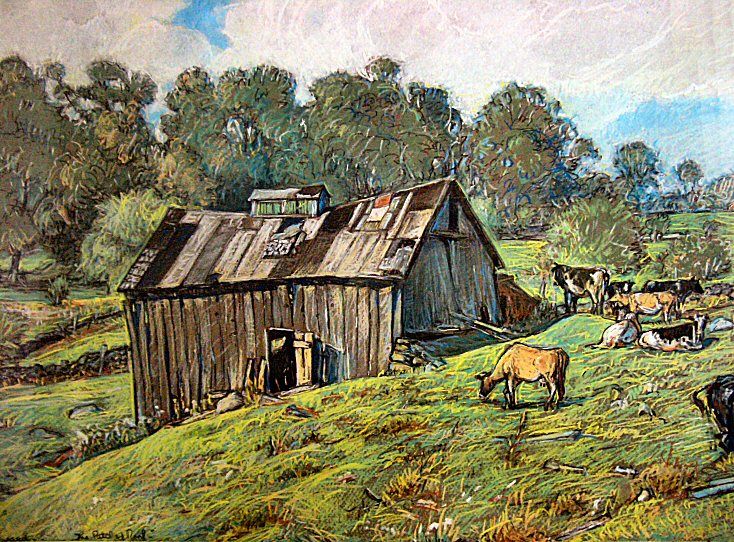
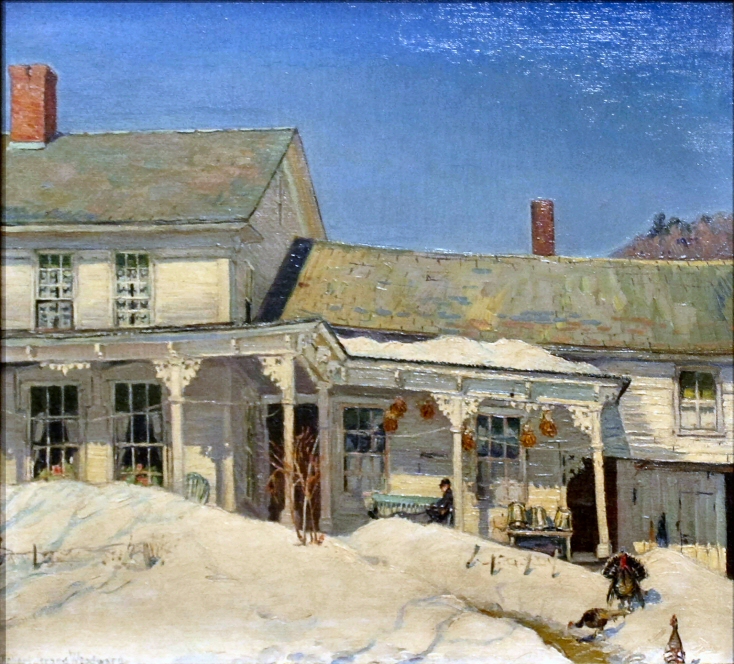
.png)

